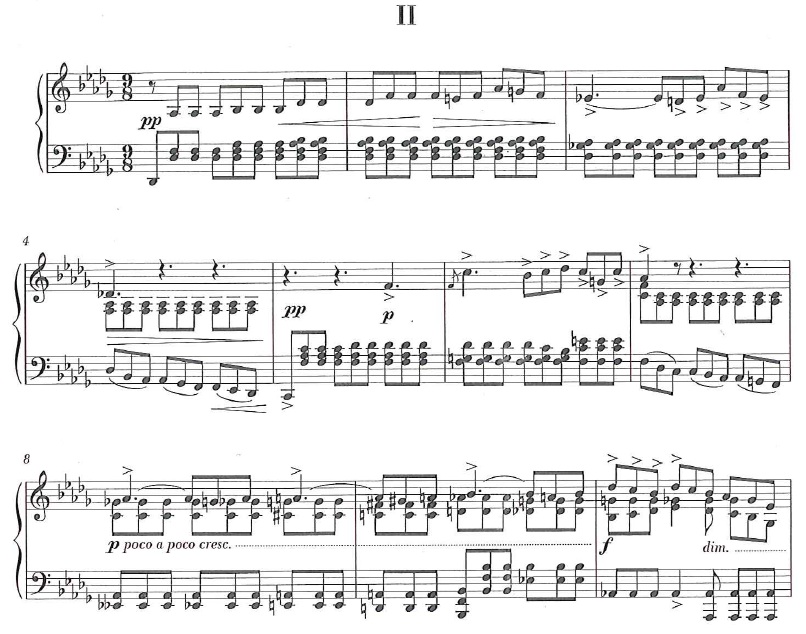This week, for the first time, I analyzed Ethel Smyth’s music in my 19th-century harmony class. I used the Kyrie from her 1893 mass as well as the beautiful slow movement of her Second Piano Sonata, written in 1877 when  she was only 19:
I found her use of the German sixth to pivot between Db major and F minor rather original. I also used, in addition to Rachmaninoff’s First Piano Sonata slow movement, the intro to the slow movement of his Third Piano Concerto. I find Rachmaninoff’s harmony subtle and quite innovative; he’s not all all the disher-up of Romantic clichés pictured in the academic imagination. As usual, the general academic view of nearly everyone is short-sighted.

